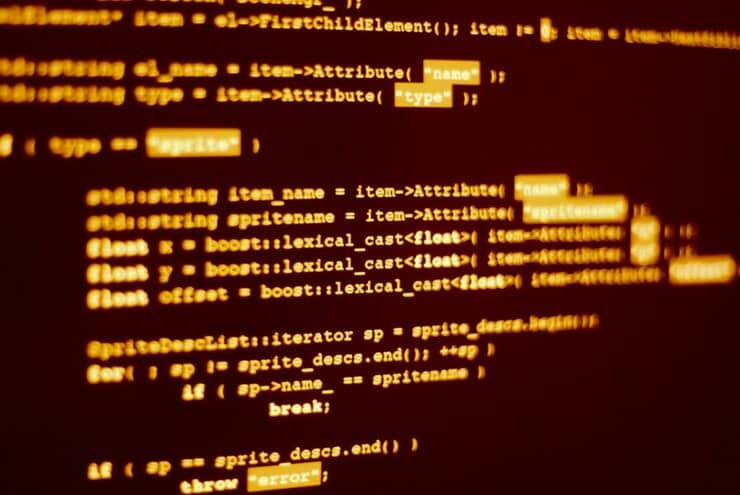Utilizing the uniq method empowers you to expunge every redundant element within an array, ensuring absolute uniqueness. Now, let’s delve into its functionality and witness its efficacy firsthand!
Mastering Duplicate Element Handling in Ruby Arrays
When you’re dealing with arrays in programming, you might encounter situations where you need to handle duplicate elements efficiently. Let’s explore how you can achieve this using Ruby and its uniq method. Take for instance an array like this:
n = [1, 1, 1, 2, 3, 4, 5]Understanding the Duplicate Issue
In this array, the number 1 is duplicated three times. Dealing with duplicate elements might skew your results or cause unintended behavior in your code. To ensure data integrity and accurate computations, it’s essential to handle duplicates appropriately.
Introducing the uniq Method
Ruby provides a convenient method called uniq to address this issue. When applied to an array, uniq removes duplicate elements and returns a new array containing only unique values. Here’s how you can use it:
unique_numbers = n.uniqKey Features of uniq Method
- Preservation of Original Array: The uniq method does not modify the original array. Instead, it generates a new array with unique elements, leaving the original array unchanged;
- Efficient Handling: uniq efficiently identifies and removes duplicate elements, making it a handy tool for data processing tasks;
- Flexibility: The uniq method can be called on arrays containing any data type – integers, strings, objects, etc., providing flexibility in various programming scenarios.
Practical Example
Let’s illustrate the usage of uniq with a practical example:
n = [1, 1, 1, 2, 3, 4, 5]
unique_numbers = n.uniq
puts unique_numbers.inspect
# Output: [1, 2, 3, 4, 5]Additional Tips
- uniq! for In-Place Modification: If you prefer to modify the original array instead of creating a new one, you can use the uniq! method, which modifies the array in place;
- Saving Memory: When dealing with large arrays, be mindful of memory usage. Generating a new array with unique elements may consume additional memory, so consider memory optimization techniques if working with extensive datasets.
Enhancing Array Uniqueness with Ruby’s Uniq Method
When it comes to refining arrays in Ruby, the uniq method emerges as a powerful tool. Understanding its inner workings can unlock efficient solutions to common programming challenges. Let’s delve deeper into how you can wield the uniq method effectively, particularly by utilizing blocks for customized uniqueness criteria.
The Mechanism Behind Ruby’s uniq Method
- Hash Conversion: When you invoke uniq, Ruby ingeniously converts your array into a hash structure, leveraging each element as a key;
- Leveraging Hash Keys: Given that hash keys inherently hold uniqueness, this transformation facilitates the extraction of unique elements effortlessly;
- Creation of Unique Array: The resultant array comprises all keys from the hash, effectively eliminating duplicates and preserving uniqueness.
Customizing Uniqueness with Blocks
- Introduction to Block Parameter: A distinctive aspect of Ruby’s uniq method lies in its flexibility to accommodate blocks, enabling tailored uniqueness criteria;
- Example Scenario – String Length: Consider an array of fruits where uniqueness is defined by the length of each string element.
fruits = %w(orange apple banana)
unique_fruits = fruits.uniq(&:size)
# Result: ["orange", "apple"]In this instance, “orange” and “banana” share a length of 6 characters. By passing &:size, we enforce uniqueness based on string length, resulting in the exclusion of “banana” due to redundancy.
Example Scenario – Object Class: Another scenario involves an array of heterogeneous objects, where uniqueness is determined by class.
objects = [1, 2, "a", "b", :c, :d]
unique_objects = objects.uniq(&:class)
# Result: [1, "a", :c]Here, unique objects are discerned by their respective classes, offering a refined array consisting of distinct types.
Maximizing Uniq with Multiple Conditions
Unlocking the potential of uniq with multiple conditions can significantly enhance your programming capabilities. Whether you’re working with user data or any other dataset, mastering this feature can streamline your code and optimize performance. Let’s delve into how to leverage uniq effectively with multiple conditions and explore its workings in detail.
Utilizing Multiple Conditions
When dealing with complex datasets, applying multiple conditions becomes essential for accurate filtering and analysis. Here’s how you can employ multiple conditions effectively:
- Identify Criteria: Determine the specific criteria based on which uniqueness needs to be evaluated. In our example, we consider age and country as the criteria for uniqueness;
- Define Object Attributes: Clearly define the attributes of the objects you’re working with. In our scenario, we have a User class with attributes such as age, name, and country;
- Using the Block Syntax: Utilize the block syntax of uniq to specify the conditions for uniqueness. This allows you to define custom logic for determining uniqueness based on the object’s attributes.
Implementation Example
Let’s illustrate the implementation with a practical example using Ruby:
# Define a User class with attributes: age, name, country
class User
attr_accessor :age, :name, :country
def initialize(age, name, country)
@age = age
@name = name
@country = country
end
end
# Array of user objects
users = [
User.new(25, 'David', 'USA'),
User.new(30, 'Petter', 'Canada'),
User.new(25, 'Raphael', 'USA')
]
# Applying uniq with multiple conditions
unique_users = users.uniq { |user| [user.age, user.country] }Understanding the Mechanism
To comprehend how uniq with multiple conditions operates, it’s essential to grasp its underlying mechanism:
- Object as Hash Key: In the absence of a block, the object itself serves as the hash key during the uniqueness comparison;
- Block Yielded Value as Key: When a block is provided, the yielded value from the block becomes the hash key, while the object functions as the hash value;
- Return Values as Array: Ruby extracts the unique values based on the specified conditions and returns them as a new array, eliminating duplicates according to the defined criteria.
Conclusion
In conclusion, harnessing the uniq method offers a seamless solution for eliminating all duplicate elements within an array, promoting clarity and efficiency in data manipulation tasks. Its straightforward functionality simplifies the process, providing a robust tool for streamlining array operations and enhancing code readability.


